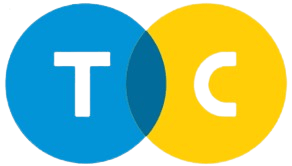Animations and learning go hand in hand. The ability to hold the learners’ attention and simplify the subject matter for improved retention and recall is one of the strengths of e-learning animations. Individuals, whether kids or adults, can use it to their benefit. E-learning animations can be designed under the heading of explainer videos, whiteboard animation, and more.
For starters, we need to understand what a whiteboard animation video is. It is a clip that shows stationary images drawn on the screen. The illustrations are accompanied by a narration that takes the audience through the story told through the art design. Whiteboard videos are viral for many reasons; they are easy to create and edit, have a minimal design that lets viewers focus on the material, and are relatively less expensive to produce.
Here we look at the five steps to create a whiteboard animation video for e-learning.
1. Write the script
You can express your ideas without the help of a professional scriptwriter. Imagine the entire scene, including the backdrop, color, movement, and characters. Then put it all in writing! The better, the more specific. Divide the script into various scenes and specify each timeframe, voice-over, and text accordingly. Make sure that the learning phase is exclusive and entertaining. The outcomes could change due to these minor modifications.
Writing a script is relatively easy. In some cases, animated videos will merely illustrate a fact or a method to clarify complex concepts. This kind of animation serves as a visual aid to accompany your course material. For instance, you might take an online course using a talking-head video. We can use animated movies to assist lecturers in explaining complex subjects when words alone are inadequate.
2. Storyboard – Design and Animation
A storyboard is the visual representation of a script. It shows the narrative flow of your video, frame by frame. Primarily, it is designed from hand-drawn sketches and notes made by experts. In addition, the colors, background, or characters are also taken note of.
During the storyboarding stage, you should know how to arrange your content, where should the frame be moved? What happens from edge to structure? Will every frame be connected to a bigger picture? Consider all these questions while working in this phase. After lining up the story according to the script, you need to animate it. The mechanics of your animation stage will be determined by the platform you utilize and the icons at your disposal.
An effective storyboard helps to conserve your budget; you can develop a comprehensive product plan that makes the entire process simpler and easier to understand. It explains your vision to the stakeholders with a clear outline.
4. Voice over
If you add more text to your animated clips, voice-over is not required. However, using it is a wise decision. This feature helps to create compelling storylines, recount tales, and give viewers a close-up view of the character’s thoughts, by evoking emotions, voice overs aid in building a stronger connection with the audience and renders a unique personality to videos.
5. Animation Timing and Illustration
Timing animations is necessary for a variety of reasons. It adds movement and interest to your animations through weight, scaling properties, and the character’s movements. It has a significant impact on the appearance of your animation. If the time is not fixed, sluggish, or protracted, your animation will not render a pleasing view. Mostly, animations and movies are played at 24 fps.
Developing a neat sense of timing is essential to create attractive animation. Timing is the basic element that gives meaning to the motion. Start at the project level if you want to manage time for your videos. Suppose your project is a 30-second commercial, then you need to time your scenes, break the scenes into different parts, and add individual notes of music within the scene. The timing of your voice and script can be adjusted after the final audio recording.
After the approval of each aspect, it is time to move on to the illustration phase. Imagine adding more images to the storyboard to illustrate each character, backdrop elements, and movement. Whichever animation you select, you should know how to use it. If you lack any design or experience, consider hiring a professional illustrator to complete whiteboard animation video for e-learning.
Why use Animation for E-Learning?
Lectures are occasionally monotonous, especially when people are used to receiving information instantly. Animations can hold your students’ attention while allowing them to explore the concepts. Animation is also an affordable choice for individuals; they are made in quick time as those with live action and other approaches. Moreover, they offer more versatility when it comes to expressing concepts. Lastly, publishers use it to communicate vital concepts, illustrate ideas, and curtail entire lessons into a short film of several minutes.
Final Words
A whiteboard animation video is a potent tool for communicating your point. But if you’re not willing to work hard to build and polish the video, there’s no purpose in making one because it won’t benefit you. The procedure listed in this article will work, but you’ll need to put some effort into making a whiteboard animation film.
For the next decade or two, e-learning in higher education will be more noticeable than ever. These videos are novel, synthesize complex information, and are reusable. In addition, they are used for different purposes, such as proper use of medical devices and software, description of healthcare benefits, and improving customer experience and internal communication.
Connect with a dependable firm today and get your animations designed!

